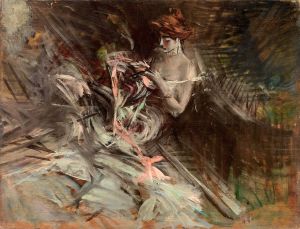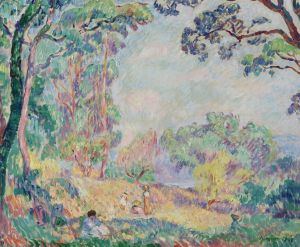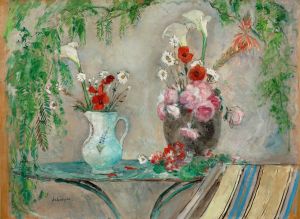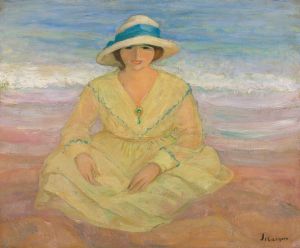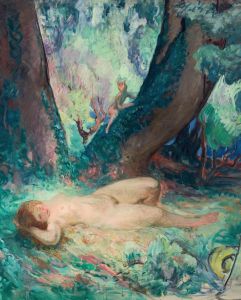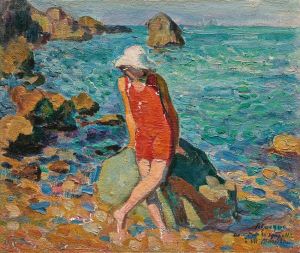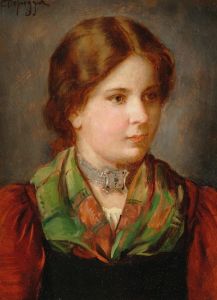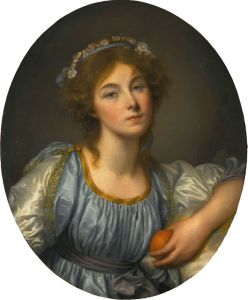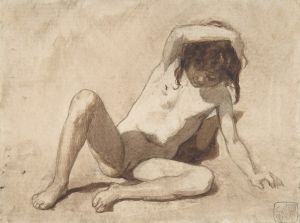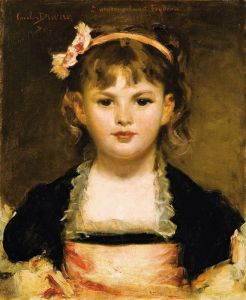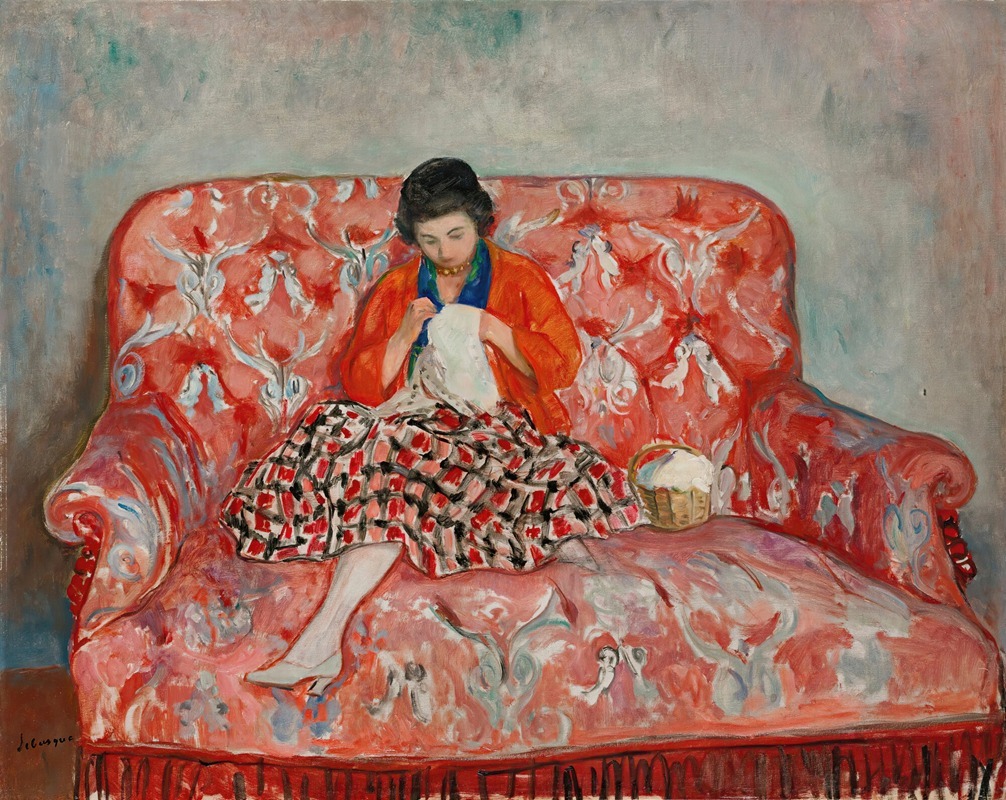
Jeune Fille Cousant Sur Un Canapé
A hand-painted replica of Henri Lebasque’s masterpiece Jeune Fille Cousant Sur Un Canapé, meticulously crafted by professional artists to capture the true essence of the original. Each piece is created with museum-quality canvas and rare mineral pigments, carefully painted by experienced artists with delicate brushstrokes and rich, layered colors to perfectly recreate the texture of the original artwork. Unlike machine-printed reproductions, this hand-painted version brings the painting to life, infused with the artist’s emotions and skill in every stroke. Whether for personal collection or home decoration, it instantly elevates the artistic atmosphere of any space.
Henri Lebasque was a French post-impressionist painter known for his vibrant use of color and light, often depicting intimate domestic scenes and landscapes. One of his notable works is "Jeune Fille Cousant Sur Un Canapé" (Young Girl Sewing on a Sofa), which exemplifies his style and thematic focus.
Henri Lebasque was born on September 25, 1865, in Champigné, France. He began his artistic education at the École régionale des beaux-arts d'Angers and later moved to Paris, where he continued his studies. In Paris, Lebasque was influenced by the works of the Impressionists and the Nabis, a group of avant-garde painters. He became associated with artists such as Pierre Bonnard and Édouard Vuillard, who were known for their innovative approaches to color and composition.
"Jeune Fille Cousant Sur Un Canapé" is a quintessential example of Lebasque's work, capturing a serene and intimate moment. The painting depicts a young girl engaged in the simple, everyday activity of sewing while seated on a sofa. This subject matter reflects Lebasque's interest in domestic life and his ability to find beauty in the mundane. The composition is characterized by its soft, harmonious colors and the gentle play of light, which are hallmarks of Lebasque's style.
Lebasque's use of color in this painting is particularly noteworthy. He employs a palette of warm, inviting hues that create a sense of tranquility and comfort. The light in the painting is diffused, casting a gentle glow over the scene and enhancing the overall feeling of calm. This treatment of light and color is indicative of Lebasque's post-impressionist influences, as he sought to capture the emotional essence of a moment rather than a precise, realistic depiction.
The setting of the painting, a cozy interior space, is rendered with attention to detail, yet it maintains a sense of simplicity and elegance. The sofa, with its soft curves and subtle patterns, serves as both a physical and compositional anchor for the scene. The young girl, absorbed in her sewing, is portrayed with a sense of grace and concentration, embodying the quietude of the moment.
Lebasque's focus on intimate, everyday subjects was part of a broader trend among artists of his time to explore the personal and the familiar. This approach was a departure from the grand historical and mythological themes that had dominated much of 19th-century art. Instead, Lebasque and his contemporaries sought to capture the beauty and significance of ordinary life.
Throughout his career, Lebasque remained committed to this vision, producing works that celebrated the joys and tranquility of domestic life. His paintings often feature family members, friends, and familiar settings, rendered with a warmth and sensitivity that resonate with viewers.
"Jeune Fille Cousant Sur Un Canapé" is a testament to Lebasque's skill as a colorist and his ability to convey emotion through his art. The painting invites viewers to pause and appreciate the quiet moments of life, offering a glimpse into the artist's world and his appreciation for the simple pleasures that surround us.
Henri Lebasque continued to paint until his death on August 7, 1937, in Le Cannet, France. His work remains celebrated for its contribution to post-impressionism and its enduring appeal, capturing the essence of a peaceful, introspective world.





